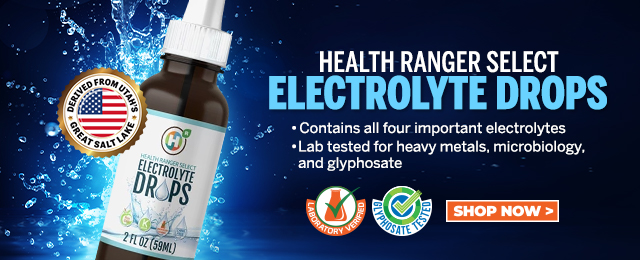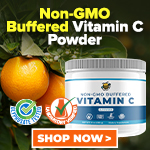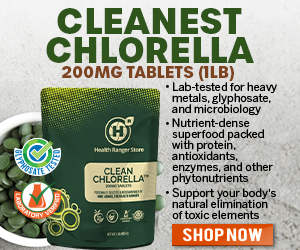Xanax made with GMOs, allergens and artificial coloring chemicals
Monday, July 14, 2014 by: Aurora Geib
Tags: Xanax, GMOs, ingredients

- Newly released JFK files reveal Pentagon's role in creating Lyme disease and covid in the same lab
- Trump nominates VACCINE ZEALOT Susan Monarez to lead the CDC, sidelining RFK Jr.'s reform efforts
- BEWARE: USDA allows genetically engineered vaccines to infiltrate organic food production
- Obama accused of laundering USAID funds to fuel global protest movements, regime change operations
- Festive flavors: The sweet history, nutritional profile and health benefits of pecan pie
- Dr. Mike Yeadon releases 15-minute testimony - WATCH - about genocidal intent of COVID “vaccines”
- Big Pharma's media takeover: How drug companies bought the news - and your health
- Analysis: The coming economic collapse, a mass uprising and Trump's three secret weapons to halt the growing revolt
- Elon Musk: Aliens could be here on Earth RIGHT NOW
- Survival 101: Effective EMF blocking techniques
- Trump reverses course on Gaza plan, says “nobody is expelling Palestinians”
- Reclaim your health: How midlife exercise reverses years of inactivity
- Big Pharma's $8 Billion bribery scheme exposed: how doctors are pushed to prescribe junk science, not heal
- Rep. Nancy Mace introduces bill to ban biological males from female facilities on federal property
- California's social media censorship law struck down: A victory for free speech or a threat to online safety?
- HUGE: Putin claims 2020 election fraud in U.S. sparked Ukraine war, calls for peace talks with Trump
- RFK Jr.'s SSRI antidepressant investigation sparks liberal meltdown, exposes Big Pharma's dangerous game
- Chris Rufo finally reveals abuse liberals unleashed on his wife and young kids...
- Elon Musk: Aliens could be here on Earth RIGHT NOW
- EPA advisor admits the agency is funneling billions to climate groups ahead of Trump’s return to White House
- Trump reverses course on Gaza plan, says “nobody is expelling Palestinians”
- Reclaim your health: How midlife exercise reverses years of inactivity
- A lack of integrity in Academia: Harvard professor found GUILTY of fraudulent research to promote CRT theory
- Space war brewing? Russia threatens to destroy Starlink satellites
- Big Pharma's $8 Billion bribery scheme exposed: how doctors are pushed to prescribe junk science, not heal
- Mike Adams Sermon 66: God will DESTROY ISRAEL for its wickedness
- Rep. Nancy Mace introduces bill to ban biological males from female facilities on federal property
- Survival 101: Effective EMF blocking techniques
- 5 Simple steps to boost your brainpower: How to strengthen executive function in a distracted world
- Historian warns Israel may be entering an “IRREMEDIABLE DECLINE”
- Florida takes a stand: DeSantis proposes permanent ban on mRNA vaccine mandates
- RFK Jr.'s SSRI antidepressant investigation sparks liberal meltdown, exposes Big Pharma's dangerous game
- New York politicians push bill allowing governor to indefinitely detain the unvaccinated on a whim
- Sales of survival bunkers rise following Russia’s use of the Oreshnik hypersonic ballistic missile
- Pilots report mysterious lights 'moving at extreme speeds' across Oregon skies
- Newly released JFK files reveal Pentagon's role in creating Lyme disease and covid in the same lab
- EPA advisor admits the agency is funneling billions to climate groups ahead of Trump’s return to White House
- The Health Ranger releases “Vaccine Zombie” song and music video, using AI-animated zombies for the music video
- The pandemic as a tool for INDOCTRINATION: Understanding “The Indoctrinated Brain” by Dr. Michael Nehls
- California's social media censorship law struck down: A victory for free speech or a threat to online safety?
- Dr. Mike Yeadon releases 15-minute testimony - WATCH - about genocidal intent of COVID “vaccines”
- Congratulations to the FULLY UNVACCINATED as you resisted the COVID-19 PROPAGANDA MACHINE fueled by over $100 BILLION
- Mike Adams releases country western hit single: Goin’ Back in Time is Comin’ Home
- RFK Jr. clears key hurdle: Sen. Susan Collins backs controversial HHS nominee, signaling a new era for health policy
- Mike Adams releases music poetry sensation: A Child of God
- Mike Adams releases new song and music video: Nothing More Disgusting Than a Globalist
- Unpacking the Lies That We’ve Been Fed – new song and music video released by Mike Adams, the Health Ranger
- Trump administration takes on global censorship: A new frontier for free speech advocacy
- Florida takes a stand: DeSantis proposes permanent ban on mRNA vaccine mandates
- “Why we influenced the 2020 elections”: Facebook files reveal the coordinated effort to bury the Hunter Biden laptop story
- Ex-FBI Chief EXPOSES disgraceful government coverups of Oklahoma City Bombing, Kennedy assassinations, 9/11 WTC, and "Terrorism" as plot to destroy Constitution
- Michigan sheriff announces criminal investigation into 2020 election crimes, Dominion Voting Systems
- Israeli soldiers accused of even more torture and abuse in the West Bank
- Federal judge backs Trump's mass firings, clearing path for government downsizing
- Red Cross issues warning to stop blood plasma donations from vaccinated people
- Scientists confirm: GENIUS brain function can be spontaneously unleashed in humans without any apparent cause
- EPA advisor admits the agency is funneling billions to climate groups ahead of Trump’s return to White House
- HYSSOP: What research reveals about the health benefits of this ancient holy herb
- Two containers with completed ballots fall out of truck in Florida
- Fully vaccinated about to see “tsunami” of illness and death, warns virologist
- Today I asked our AI language model “Neo” about which phytonutrients or phytochemicals can block the spike protein related to SARS-CoV-2 … Here is what it answered…
- Global leaders unite to clamp down on “misinformation” with UN-backed Cascais Declaration
- BREAKING: 2025 NDAA authorizes mandatory military draft of WOMEN across America… as Pentagon pursues global NUCLEAR war with both Russia and China at the same time
- Michael Yon warns of a ZIONIST TAKEOVER in Trump’s second administration
- BOMBSHELL: DNA testing kits are a SCAM to develop ethnic-specific bioweapons
- Ozempic and Wegovy weight loss drugs are injectable LIZARD VENOM PEPTIDES that may unleash a devastating wave of organ failure… side effects align with symptoms of SNAKE BITES
- Israeli soldiers accused of even more torture and abuse in the West Bank
- These 13 countries just signed an agreement to engineer a global FAMINE by destroying food supply
- NASA admits that climate change occurs because of changes in Earth’s solar orbit, and NOT because of SUVs and fossil fuels
- RFK Jr. clears key hurdle: Sen. Susan Collins backs controversial HHS nominee, signaling a new era for health policy
- Sermon 30: How Jesus reveals Caesar’s FAKE CURRENCY and FALSE AUTHORITY
- Coriander seeds: Ancient medicine backed by modern science
But does that mean you have to suffer with anxiety and panic disorder? Not at all. There's an alternative treatment which can be just as effective as Xanax, but which has none of the potential side effects and risks associated with the drug and its active and inactive ingredients. First, let's look at the "inactive" ingredients in Xanax.
Although alprazolam is listed as the primary or active ingredient, Xanax is made with GMOs, allergens and other ingredients that can cause health problems and reactions in many people. Here's an overview of some of the "inactive" ingredients lurking in a Xanax tablet:
- Lactose: About a third of the population is lactose intolerant, and many more have low levels of lactase, the enzyme needed to properly digest lactose. People who are lactose intolerant may experience intestinal gas, bloating, stomach pain and cramps, diarrhea and even vomiting. (1)
- Corn starch: Almost 90 percent of corn grown in the U.S. is genetically modified, injected with foreign DNA that helps plants tolerate higher levels of pesticides and herbicides, among other modifications. (2) Genetically modified crops are a relatively new invention, and therefore, their health risks have not been fully studied over a long period. Many scientists worry that the addition of new genetic material could cause health effects ranging from allergic reactions to more serious issues affecting the immune system, digestion or organ health. In addition, corn starch can become contaminated with gluten during manufacturing and production, increasing the risk of reaction among people with celiac disease and those with gluten sensitivity. (3)
- Sodium benzoate: A known carcinogen, sodium benzoate is a compound that forms as a result of a reaction between benzoic acid and sodium hydroxide. It's commonly added to food products, drugs and supplements as a preservative and to inhibit mold. Sodium benzoate reacts with cell DNA by preventing cells from taking in oxygen, a necessary element for cellular metabolism and other functions. In addition to its link with cancer, sodium benzoate has been associated with an increased risk of Parkinson's disease, neurodegenerative disorders and premature aging. (4)
- Magnesium stearate: Associated with the formation of kidney stones and the development of liver ailments, magnesium stearate can suppress T cells, an important component of your body's immune system. What's more, stearate is often derived from cottonseed oil, which has one of the highest levels of pesticides of all processed oils, which means many products containing magnesium stearate also may be contaminated by pesticides. (5)
- FD&C Yellow No. 6 and FD&C Blue No. 2: Most food colors are derived from petroleum products, and therefore are associated with a potentially increased risk for cancer. As a result, most are tested continuously on animals. FD&C Yellow No. 6 is commonly used in cosmetic products and D&C Blue No. 2 is often found in hair dyes. In some people, they can cause allergic reactions and skin reactions. (6, 7)
- Docusate sodium: Docusate sodium is used as a laxative and stool softener. Possible side effects include cramping, bloating and gas. In some cases, it can cause diarrhea, indicating an intolerance of this so-called inactive ingredient. (8)
The holistic alternative
While doctors may reach for their prescription pads at the mere mention of feelings of anxiousness, nervousness or depression, there are several well documented alternative treatments that help your body learn to tap into its own natural powers to relieve stress and calm even the most entrenched panic disorders.Herbs like valerian and St. John's wort have a calming effect and have been used for centuries to treat anxiety, panic disorders and depression. These and other herbs can be purchased as organic supplements or may be steeped into a tea. Other foods that contain B vitamins and omega-3 fatty acids have also been linked with a decrease in mood disorders, and eating a balanced diet overall helps strengthen your body's immune system as well as boost mood.
Yoga, meditation and regular aerobic exercise like walking can also have significant benefits for mood disorders. When combined with a good diet and supplements, you can develop a treatment regimen that's designed specifically for your needs and preferences.
As with any other illness or medical condition, knowing your options means you can make an educated decision about your care. When it comes to incorporating holistic methods, the benefits are clear: You can avoid the serious side effects of Xanax while also enjoying all the added benefits that go along with better overall health.
Source:
(1) http://digestive.niddk.nih.gov/ddiseases/pubs/lactoseintolerance/(2) http://www.whfoods.com/genpage.php?tname=george&dbid=259
(3) http://www.naturalnews.com
(4) https://www.naturalnews.com/033726_sodium_benzoate_cancer.html
(5) http://www.naturalnews.com
(6) http://www.ewg.org/skindeep/ingredient/702444/FD%26C_YELLOW_6/#
(7) http://www.ewg.org/skindeep/ingredient/702410/FD%26C_BLUE_2/\
(8) http://www.livestrong.com
Xanax at FETCH.news
Get independent news alerts on natural cures, food lab tests, cannabis medicine, science, robotics, drones, privacy and more.
Take Action: Support Natural News by linking to this article from your website
Permalink to this article:
Embed article link: (copy HTML code below):
Reprinting this article:
Non-commercial use OK, cite NaturalNews.com with clickable link.
Follow Natural News on Facebook, Twitter, Google Plus, and Pinterest
Science News & Studies
Medicine News and Information
Food News & Studies
Health News & Studies
Herbs News & Information
Pollution News & Studies
Cancer News & Studies
Climate News & Studies
Survival News & Information
Gear News & Information
News covering technology, stocks, hackers, and more



"Big Tech and mainstream media are constantly trying to silence the independent voices that dare to bring you the truth about toxic food ingredients, dangerous medications and the failed, fraudulent science of the profit-driven medical establishment.
Email is one of the best ways to make sure you stay informed, without the censorship of the tech giants (Google, Apple, Facebook, Twitter, YouTube, etc.). Stay informed and you'll even likely learn information that may help save your own life."
–The Health Ranger, Mike Adams













































